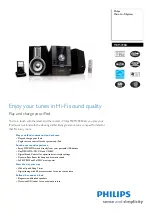
Site Prep - U.S and Canadian Installations
Probe Wiring Safety Issues
3-2
IN–TANK PROBES
Magnetostrictive Probes are capable of performing precision tank testing, as described by the United States
Environmental Protection Agency, at 0.1 gph and 0.2 gph per
hour when combined with the in-tank leak testing
features of a TLS Console. Reference Figure 2-1 on page 2-2 to determine the minimum Mag Probe length for
installation in a dedicated riser.
PROBE JUNCTION BOXES
Weatherproof electrical junction boxes with a gasketed cover are required on the end of each probe conduit run at
the manhole or monitoring well location. Gasketing or sealing compound must be used at each entry to the
junction box to ensure a waterproof junction. The interior volume of each junction box must be a minimum of 16
cubic inches.
Veeder-Root recommends the following junction boxes or equivalent:
• Appleton Electric Co. - JBDX junction box, JBK-B cover, and JB-GK-V gasket.
• Crouse-Hinds Co. - GRFX-139 junction box, GRF-10 cover, and GASK-643 gasket.
Probe Wiring Safety Issues
Wiring between the TLS-IB and the probes is of limited electrical power so that there is insufficient energy to ignite
fuel. In the TLS-IB, the low power probe wiring is considered intrinsically safe because it is physically isolated from
all high power wiring. To maintain the integrity of this safety feature probe wiring can not share the same conduit
with power wiring. In addition, probe cables can only enter the TLS-IB through the designated intrinsically safe
area knockouts.
If the TLS-IB is being retrofitted into a paved site, you can cut grooves in the pavement, run direct burial cable to
the probes, and then seal over the cable grooves.
Before trenching, you should diagram all conduit runs between the TLS-IB’s intended location and its deployed
probes. Your site diagram will help you calculate conduit and wiring lengths, and necessary quantities of junction
boxes, sealing boxes, clamps, brackets, etc.
Throughout this planning process and in the actual installation, you must follow all latest National Electric Codes,
and applicable federal, state, and local codes as regards conduit type, depth below grade, sealing, grounding, wire
capacities, direct burial (if permitted), etc.
WARNING
Probes operate in areas where flammable liquids and explosive vapors may
be present.
FAILURE TO COMPLY WITH THIS WARNING COULD RESULT IN EXPLOSION,
DEATH, SERIOUS PERSONAL INJURY, PROPERTY LOSS OR EQUIPMENT
DAMAGE.
1. Read thoroughly and follow the instructions shipped with each probe.
2. Probe wiring conduit must not contain any other wires.
3. Probe wiring and conduits must enter the TLS-IB only through their
designated areas (see Figure 2-3 on page 2-6).
4. Power and communication wires and conduit must not enter the
intrinsically safe compartment of the TLS-IB.
















































